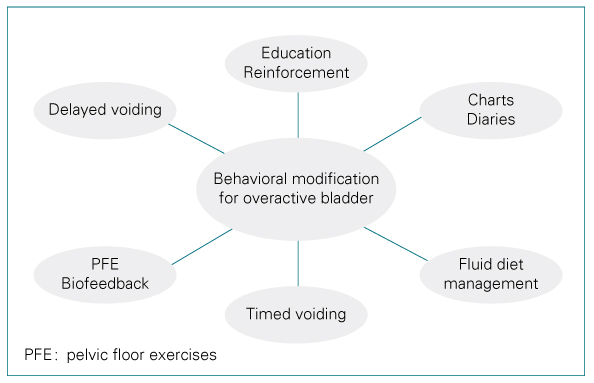J Korean Med Assoc.
2005 Aug;48(8):744-754. 10.5124/jkma.2005.48.8.744.
Voiding Dysfunctions in Primary Care Practices
- Affiliations
-
- 1Department of Urology, Sungkyunkwan University School of Medicine, Samsung Medical Center, Korea. lks@smc.samsung.co.kr
- KMID: 2064940
- DOI: http://doi.org/10.5124/jkma.2005.48.8.744
Abstract
- The availability of new urologic medications has made it possible to manage a variety of urologic disorders successfully in a primary care setting. As a result, primary care physicians(PCPs) need to be familiar with the terminology and screening instruments used by urologists to decipher and categorize urologic symptoms. PCPs are often responsible for the treatment of lower urinary tract symptoms and benign prostatic hyperplasia(BPH). Evolving strategies of management include utilization of both symptom-modifying treatment and disease-modifying treatment. Alphablockers excellently provide symptomatic treatment, but do not alter long-term disease progression. 5-alpha reductase inhibitors can reduce the need for surgical intervention and the incidence of acute urinary retention. The combination of alphablockers and 5-alpha reductase inhibitors would be the choice of therapy in some patients, typically those with large prostate glands indicative of disease progression. Overactive bladder(OAB) is defined as urinary urgency with or without urge incontinence, usually with frequency and nocturia, in the absence of a pathologic or metabolic condition that can explain these symptoms. The diagnosis of OAB should be made after a careful history taking, physical examination, laboratory evaluation, and use of tools such as voiding diaries. Anticholinergic agents are the first choice for drug therapy. Treatment that couples drug therapy with behavioral techniques aimed at modifying abnormal voiding patterns may provide the best outcomes in many patients with OAB. There are situations for referring patients to urologists for more detailed evaluation and management, including when the PCP has a lack of interest in or sufficient knowledge about lower urinary tract symptoms and if the patient shows a poor response to prior noninvasive therapy, requiring in-depth investigation.
MeSH Terms
-
5-alpha Reductase Inhibitors
Cholinergic Antagonists
Diagnosis
Disease Progression
Drug Therapy
Family Characteristics
Humans
Incidence
Lower Urinary Tract Symptoms
Mass Screening
Nocturia
Physical Examination
Primary Health Care*
Prostate
Prostatic Hyperplasia
Urinary Bladder, Overactive
Urinary Incontinence, Urge
Urinary Retention
5-alpha Reductase Inhibitors
Cholinergic Antagonists
Figure
Reference
-
1. Abrams P, Cardozo L, Fall M, Griffiths D, Rosier P, Ulmsten U, et al. The standardisation of terminology in lower urinary tract function: report from the standardisation sub-committee of the International Continence Society. Urology. 2003. 61:37–49.
Article2. Beduschi R, Beduschi MC, Oesterling JE. Benign prostatic hyperplasia: use of drug therapy in primary care. Geriatrics. 1998. 53:24–28. 33–34. 37–40.3. Takeda M, Araki I, Kamiyama M, Takihana Y, Komuro M, Furuya Y. Diagnosis and treatment of voiding symptoms. Urology. 2003. 62:5 Suppl 2. 11–19.
Article4. McConnell JD, Barry MJ, Bruskewitz RC. Benign prostatic hyperplasia: diagnosis and treatment. Agency for Health Care Policy and Research. Clin Pract Guidel Quick Ref Guide Clin. 1994. 1–17.5. McConnell JD, Roehrborn CG, Bautista OM, Andriole GL Jr, Dixon CM, Kusek JW, et al. The long-term effect of doxazosin, finasteride, and combination therapy on the clinical progression of benign prostatic hyperplasia. N Engl J Med. 2003. 349:2387–2398.
Article6. Wein AJ. Diagnosis and treatment of the overactive bladder. Urology. 2003. 62:5 Suppl 2. 20–27.
Article7. Stewart WF, Van Rooyen JB, Cundiff GW, Abrams P, Herzog AR, Corey R, et al. Prevalence and burden of overactive bladder in the United States. World J Urol. 2003. 20:327–336.
Article8. Milsom I, Abrams P, Cardozo L, Roberts RG, Thuroff J, Wein AJ. How widespread are the symptoms of an overactive bladder and how are they managed? A population-based prevalence study. BJU Int. 2001. 87:760–766.
Article9. Steers WD, Lee KS. Depression and incontinence. World J Urol. 2001. 19:351–357.
Article10. Ouslander JG. Management of overactive bladder. N Engl J Med. 2004. 350:786–799.
Article11. Burgio KL, Locher JL, Goode PS. Combined behavioral and drug therapy for urge incontinence in older women. J Am Geriatr Soc. 2000. 48:370–374.
Article
- Full Text Links
- Actions
-
Cited
- CITED
-
- Close
- Share
- Similar articles
-
- Overview of the Epidemiology of Lower Urinary Tract Dysfunction in South Korea
- The Effects of Spiritual Well-being on Self-care Practices in People Undergoing Hemodialysis: The Mediating Effect of Hope
- Core Competency of Basic Practice of Nurse-Midwifery
- Influence of practice location on prescribing, diabetes care, and colorectal cancer screening among Czech general practitioners during the COVID-19 pandemic
- Standard model and quality appraisal framework for the organization of primary care


